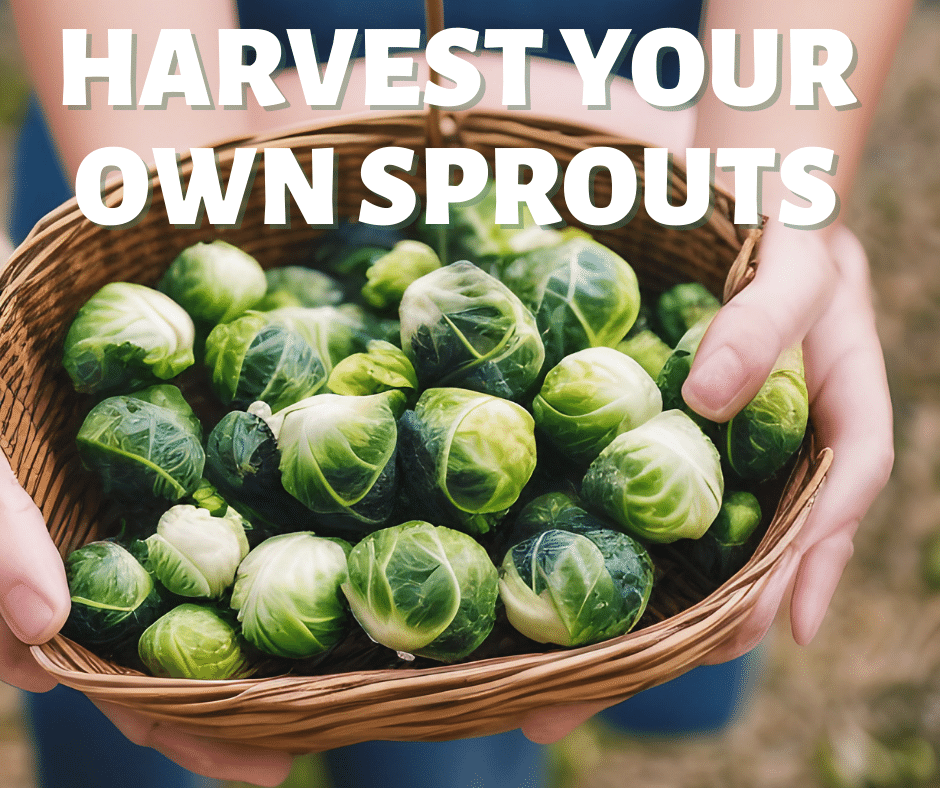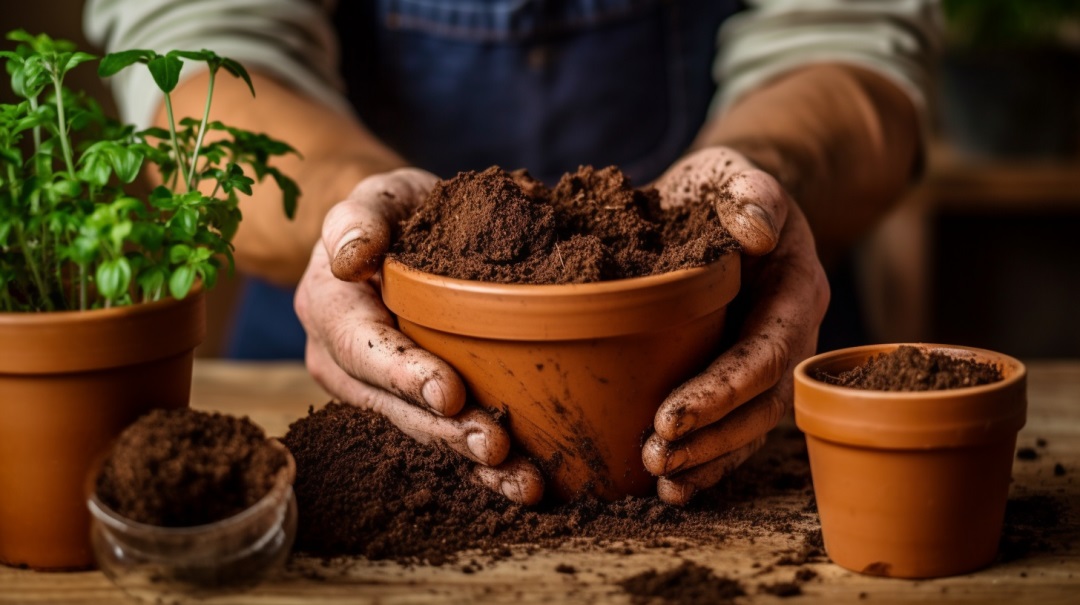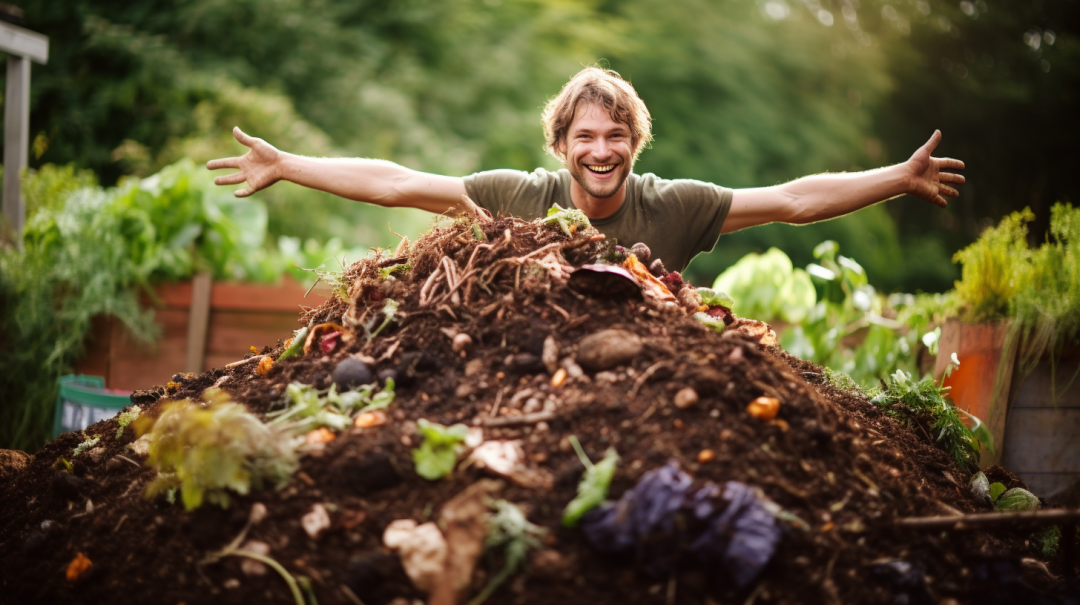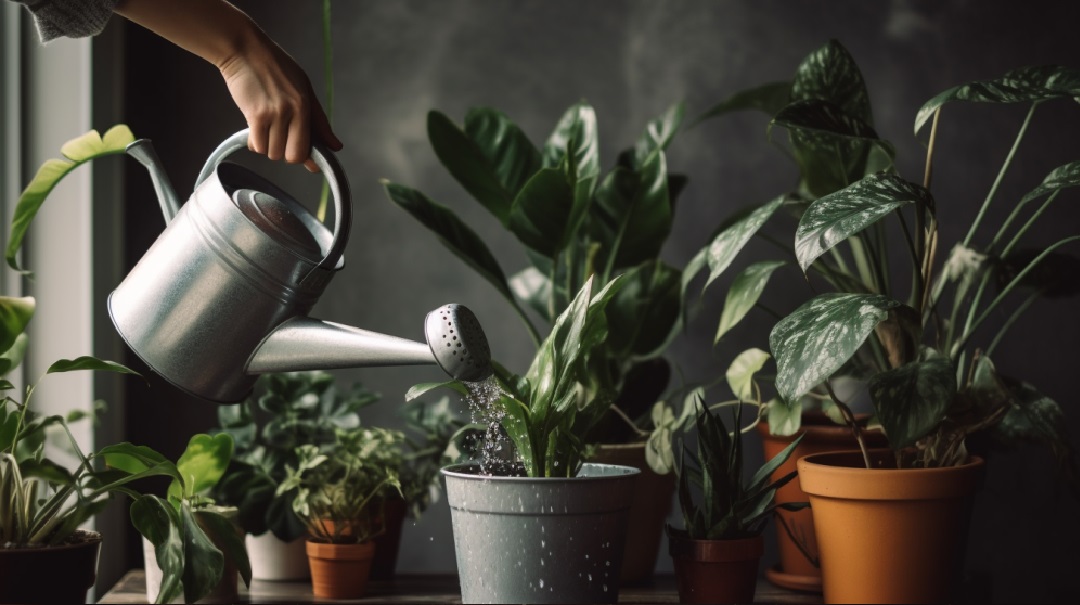Brussels sprouts are a tasty and nutritious vegetable that can be a great addition to any home garden. They are part of the cabbage family and are known for their unique flavor and texture. If you are new to gardening and want to try growing your own Brussels sprouts, this guide will provide you with all the information you need to get started.
Step 1: Choosing the Right Variety of Brussels Sprouts
The first step in growing Brussels sprouts is to choose the right variety. There are many different varieties of Brussels sprouts available, each with their own unique characteristics. Some varieties are more tolerant of cold weather, while others are more resistant to pests and diseases. It is important to choose a variety that is well-suited to your local climate and soil conditions. Some popular varieties include ‘Jupiter’, ‘Falstaff’, ‘Long Island Improved’, and many more varieties of Brussels sprouts that you can choose from. It’s also important to consider the size of the plant, the color of the sprouts, and the texture of the sprouts when choosing the variety of Brussels sprouts.
Step 2: Preparing the Soil for Planting Brussels Sprouts
Once you have chosen your variety, the next step is to prepare the soil. Brussels sprouts prefer well-drained, fertile soil with a pH between 6 and 7. If your soil is heavy clay or sandy, it is a good idea to amend it with organic matter such as compost or well-rotted manure. This will help to improve the soil structure and provide the plants with the nutrients they need to grow. It’s also important to remove any weeds and debris from the soil before planting.
Step 3: Planting Brussels Sprouts
Brussels sprouts can be planted from seed or as transplants. If you are planting from seed, you will need to start them indoors about 6 to 8 weeks before the last frost date. If you are using transplants, you can plant them directly in the garden after the last frost. When planting, be sure to space the plants 18 to 24 inches apart, with 24 inches being ideal. This will give them enough room to grow and develop properly. It’s also important to keep the soil consistently moist, and to provide the sprouts with enough sunlight.
Step 4: Growing and Caring for Brussels Sprouts
Growing Brussels sprouts require consistent moisture, sunlight and fertilization. They prefer consistent moisture, so be sure to water them regularly, especially during dry spells. A good rule of thumb is to provide about 1 inch of water per week. It is also important to provide them with a balanced fertilizer to encourage healthy growth. As the plants grow, you can also give them a side dressing of fertilizer to encourage healthy growth. It’s also important to keep an eye on the yellow leaves and to remove them as they appear. Also, it’s important to keep the soil consistently moist throughout the growing season.
Step 5: Companion Planting with Brussels Sprouts
Companion planting is a great way to improve the health and productivity of your Brussels sprouts. Companion plants can help to repel pests, improve soil health, and provide shade for the sprouts. Some good companion plants for Brussels sprouts include aromatic herbs like thyme, rosemary, oregano and other plants in the cabbage family like garlic and onions which are known to be great companion plants for Brussels sprouts. Companion planting can also improve the flavor of your sprouts and increase their resistance to pests and diseases.
Step 6: Pest and Disease Control for Brussels Sprouts
Brussels sprouts are relatively pest and disease resistant, but they can still be affected by certain problems. Common pests include aphids, slugs, and caterpillars. Common diseases include clubroot and black rot. To prevent these problems, it is important to keep the plants well-watered and fertilized, as well as to keep the area around the plants free of debris and weeds. Regular inspections and early treatment are key to preventing pests and diseases. It’s also important to use organic methods of pest control rather than chemical pesticides.
Step 7: Harvesting Brussels Sprouts
Brussels sprouts are typically ready to harvest about 100 to 130 days after planting. They will form at the bottom of the plant and should be harvested when they are 1 to 2 inches in diameter. The best time to harvest is when the sprouts are firm and tightly packed. You can harvest them throughout the growing season, starting from the bottom of the plant upward. Fresh sprouts are the best, and they will keep in the refrigerator for up to two weeks. It’s important to harvest the sprouts at the right time to ensure that they are of the best quality.
Step 8: Storing and Preserving Brussels Sprouts
Once harvested, Brussels sprouts can be stored in the refrigerator for up to two weeks. They can also be preserved by blanching and freezing them. To blanch Brussels sprouts, bring a large pot of water to a boil and add the sprouts for about 3 minutes. Remove them from the water and immediately place them in a bowl of ice water to stop the cooking process. Once cooled, remove the sprouts from the ice water, dry them, and then store them in airtight containers or freezer bags in the freezer. This way you can enjoy your fresh Brussels sprouts throughout the year.
Step 9: Growing Brussels Sprouts in Pots
Growing Brussels sprouts in pots is definitely possible, but it’s important to choose a large enough pot and to provide the plants with enough room to grow. They also prefer consistent moisture, so be sure to water them regularly. And, it’s also important to make sure that the pot has drainage holes so that the soil doesn’t get waterlogged. Growing Brussels sprouts in pots is a great option for those who have limited space in their garden.
Step 10: Enjoying Your Harvest of Brussels Sprouts
Once your Brussels sprouts are ready to harvest, there are many ways to enjoy them. They can be roasted, steamed, sautéed, or added to soups and stews. They are also delicious when paired with bacon, nuts, or cheese. Brussels sprouts are a versatile vegetable that can be used in many different recipes and cooking methods. It’s important to try different recipes to find the one that you like the most.
Conclusion:
Growing Brussels sprouts is a great way to add a delicious and nutritious vegetable to your home garden. With a little bit of care and attention, you can easily grow your own Brussels sprouts and enjoy them fresh from the garden. Remember to choose the right variety, prepare the soil, plant properly, keep the plants well-watered and fertilized, harvest at the right time, use companion planting, and control pests and diseases for the best result. And, don’t forget to enjoy the fruits of your labor by experimenting with different recipes and cooking methods. It’s also important to remember that Brussels sprouts are a cool weather crop and they prefer a long growing season, so it’s best to plant them in late summer or early fall. And, if you’re a beginner gardener, don’t be discouraged if your first attempt at growing Brussels sprouts doesn’t yield the results you expected. Gardening is a learning process, and with each season, you’ll gain more knowledge and experience. Happy gardening!
Frequently Asked Questions about Growing Brussels Sprouts
What is the best time of year to plant Brussels sprouts?
The best time to plant Brussels sprouts is in late summer or early fall. This is because they are a cool weather crop and they prefer a long growing season. If you’re planting from seed, you should start them indoors about 6 to 8 weeks before the last frost date. If you’re using transplants, you can plant them directly in the garden after the last frost.
How much do Brussels sprouts need for growth?
Brussels sprouts need about 18 to 24 inches of space between plants. It’s important to give them enough room to grow and develop properly. This will also help to prevent overcrowding and disease.
How often should I water Brussels sprouts?
Brussels sprouts prefer consistent moisture, so it’s important to water them regularly, especially during dry spells. A good rule of thumb is to provide about 1 inch of water per week. It’s important to keep the soil consistently moist throughout the growing season.
What kind of fertilizer is best for Brussels sprouts?
Brussels sprouts prefer a balanced fertilizer to encourage healthy growth. You can use a fertilizer specifically formulated for brassica crops, or a balanced fertilizer with equal parts of Nitrogen, Phosphorus and Potassium. As the plants grow, you can also give them a side dressing of fertilizer to encourage healthy growth.
What are some good companion plants for Brussels sprouts?
Some good companion plants for Brussels sprouts include aromatic herbs like thyme, rosemary, oregano and other plants in the cabbage family like garlic and onions. Companion planting can help to repel pests, improve soil health, and provide shade for the sprouts.
How do I harvest Brussels sprouts?
Brussels sprouts are ready to harvest about 100 to 130 days after planting. They form at the bottom of the plant and should be harvested when they are 1 to 2 inches in diameter. The best time to harvest is when the sprouts are firm and tightly packed. You can harvest them throughout the growing season, beginning at the tail of the plant upward.
How do I store and preserve Brussels sprouts?
Once harvested, Brussels sprouts can be stored in the refrigerator for up to two weeks. They can also be preserved by blanching and freezing them. To blanch Brussels sprouts, bring a large pot of water to a boil and add the sprouts for about 3 minutes. Remove them from the water and immediately place them in a bowl of ice water to stop the cooking process. Once cooled, remove the sprouts from the ice water, dry them, and then store them in airtight containers or freezer bags in the freezer. This way you can enjoy your fresh Brussels sprouts throughout the year.
Can I grow Brussels sprouts in pots?
Yes, you can grow Brussels sprouts in pots, but it’s important to choose a large enough pot and to provide the plants with enough room to grow. They also prefer consistent moisture, so be sure to water them regularly. And, it’s also important to make sure that the pot has drainage holes so that the soil doesn’t get waterlogged.
Are there any specific pests or diseases that I should watch out for when growing Brussels sprouts?
When growing Brussels sprouts, it’s important to be aware of common pests and diseases that can affect the plants. One of the most common pests that can affect Brussels sprouts is aphids. These small, soft-bodied insects feed on the sap of the plant and can cause damage to the leaves and stems. They can also spread diseases from plant to plant. To control aphids, you can use a strong spray of water to knock them off the plants, or use an insecticidal soap or neem oil spray.
Another common pest that can affect Brussels sprouts is slugs. These slimy creatures feed on the leaves of the plant and can cause significant damage to the leaves. To control slugs, you can use slug bait, or place copper strips around the base of the plants.
Caterpillars are another common pest that can affect Brussels sprouts. They can cause damage to the leaves and can quickly defoliate the plant. To control caterpillars, you can use Bt (Bacillus thuringiensis) which is a biological insecticide that targets caterpillars or you can handpick them and destroy them.
Common diseases that can affect Brussels sprouts include clubroot and black rot. Clubroot is a soil-borne disease that can cause the roots of the plant to become distorted and swollen. It’s difficult to control once it’s established, so it’s important to use disease-free seed and transplants, and to avoid planting in areas where the disease is known to occur. Black rot is a fungal disease that can cause the leaves to turn yellow and the stem to rot. It is also important to avoid overcrowding the plants and to keep the area around the plants free of debris and weeds to prevent the disease from spreading.
To prevent these problems, it is important to keep the plants well-watered and fertilized, as well as to keep the area around the plants free of debris and weeds. Regular inspections and early treatment are key to preventing pests and diseases. It’s also important to use organic methods of pest control rather than chemical pesticides.
It’s also important to practice good garden hygiene by removing and destroying any infected plants and debris, as well as to rotate your crop every year to avoid re-infecting the soil. Additionally, using organic mulch around the base of the plants can help to deter pests and diseases as well as maintain soil moisture and suppress weeds.
Another important aspect of preventing pests and diseases is to select varieties that are resistant to the common pests and diseases in your area. It is always good to research on the available varieties that are resistant to common pests and diseases and choose them for your garden.
Can I grow Brussels sprouts from seed?
Yes, you can grow Brussels sprouts from seed. You will need to start them indoors about 6 to 8 weeks before the last frost date, and then transplant them to the garden after the last frost. It’s also important to keep in mind that Brussels sprouts are a slow-growing crop, so be patient and don’t expect to harvest them right away.
How many pounds of sprouts can I expect from a single Brussels sprout plant?
This can vary depending on the variety of Brussels sprouts you’re growing, and the growing conditions. However, you can expect to harvest about 2 to 3 pounds of sprouts from a single plant.
What are some tips for getting the best taste from my Brussels sprouts?
To get the best taste from your Brussels sprouts, it’s important to harvest them at the right time and to cook them properly. Roasting, steaming, and sautéing are all great cooking methods that can bring out the unique flavor of Brussels sprouts. They are also delicious when paired with bacon, nuts, or cheese. Experiment with different recipes and cooking methods to find the one that you like the most.




Leave a Reply